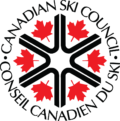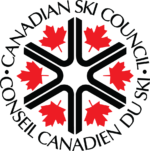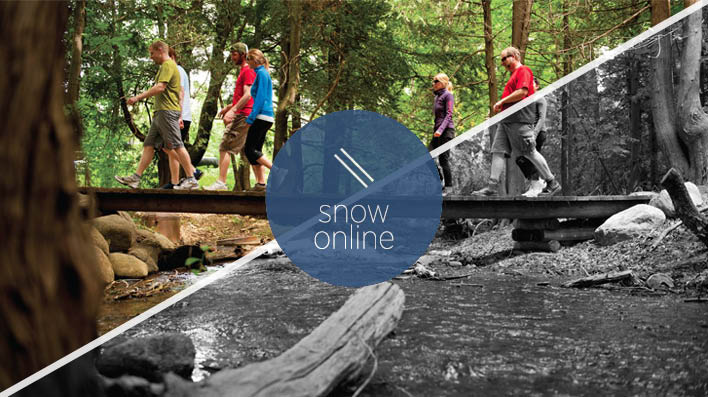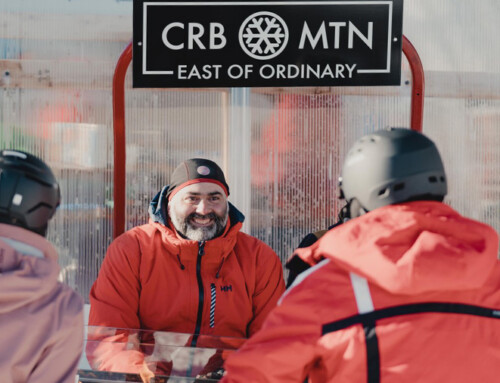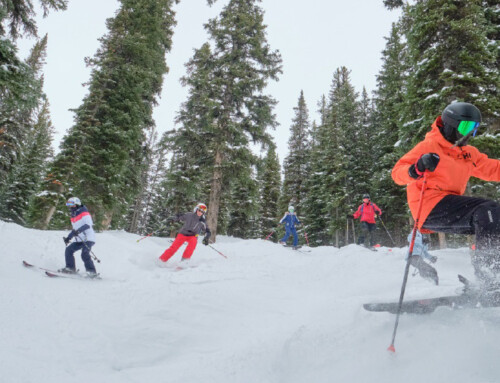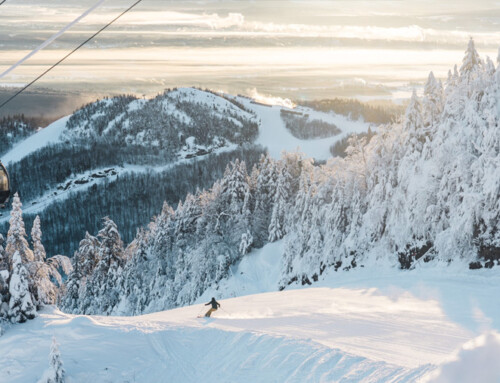Story courtesy:
Minimizing the environmental impacts of a mountain resort is a balancing act. From chairlifts to snowmaking, waste management and night ski lights, challenges change based on season, local weather and climate.
“We are in a business that is sensitive to environmental concern,” says Lindsay Ayers, Director of Planning and Environment at Blue Mountain Resort. “We are committed to being a great business and to being as sustainable as possible.”
Staying on the ball environmentally has kept her busy for over ten years. She is responsible for looking at Blue Mountain Resort (BMR) from head to toe; above ground, underground and from the sky.
WATER
The vast majority of eastern North American resorts rely on snowmaking systems. Each season the amount of water used to create snow varies but Blue’s water use goals remain the same: take only what you need and ensure water quality remains high.
“We take only a small proportion of what we are permitted to take from Georgian Bay,” says Ayers.
Water is taken via BMR’s pumphouse at Northwinds Beach and drawn underground to the resort. The Ontario Ministry of the Environment and Climate Change grants the resort a permit to take water, which includes limits. With geography to thank, water use at BMR cycles in a closed loop system meaning that most of what is taken, is also returned.
It takes planning and effort to minimize the effects of developing a four-season destination on the Niagara Escarpment, a UNESCO world biosphere reserve.
“About 90 percent of the water drains back into Georgian Bay, with some water being lost to evaporation,” says Ayers. Use increases in winter months for snow production, but decreases in the summer.
Stormwater samples are tested by a third-party laboratory on a monthly basis spring through fall for various water quality parameters and a benthic invertebrate and fish habitat study is conducted every five years by one of BMR’s environmental consultants. The resort also recently updated its Trail Construction and Maintenance Best Management Practices manual to ensure it is applying the most appropriate measures, including erosion and sediment control, during development activities.
TRAILS
Blue Mountain Resort straddles the Niagara Escarpment and all development on the ski hills is regulated by the Niagara Escarpment Commission (NEC). As a result, Blue works hand-in-hand with the NEC every time they want to put a shovel in the dirt. In addition, BMR converges with the internationally recognized Bruce Trail.
“We have public hiking trails that run up and down the Escarpment; some of these trails connect the Bruce Trail,” says Ayers. With BMR-maintained hiking trails feeding into the Bruce Trail in some areas, there is a sense of connectivity and community.
ENERGY
It takes planning and effort to minimize the effects of developing a fourseason destination on the Niagara Escarpment, a UNESCO world biosphere reserve. One area of advancement is the upgrade to ultra-energy-efficient Light Emitting Diode (LED) lighting for night skiing. BMR performed a pilot project using LED lights on selected ski trails this past season.
“You can tell the difference,” Ayers says. “The light is more uniform, crisp, more white versus yellow.”
From an environmental perspective, the LED lights significantly reduce direct up light and skyglow and reduce light trespass from entering natural animal habitats. The lights also have a positive effect on skier safety and overall guest experience, which further leads to its positive review.
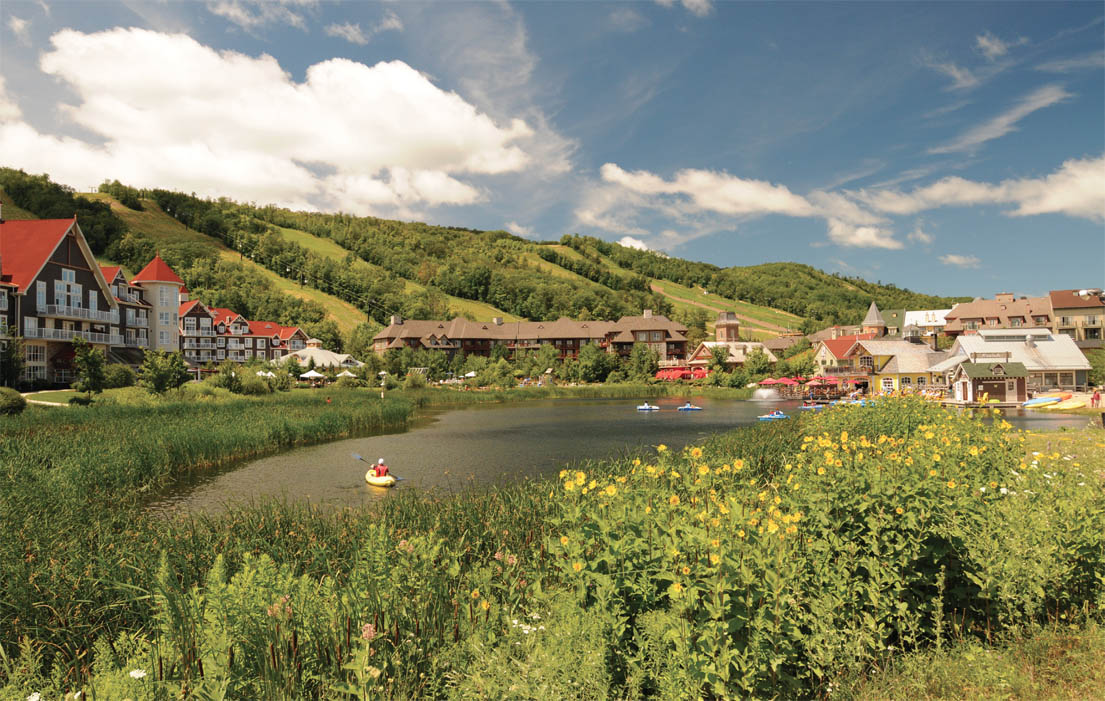
“Based on results of the pilot project, we are optimistic that retrofitting all of BMR’s ski trails with LED lights will not only improve the experience for guests who ski or ride at night but we also expect energy savings of up to 60 percent.”
The LED lights significantly reduce direct up light and skyglow and reduce light trespass from entering natural animal habitats.
BMR has explored, and will continue to explore renewable energy opportunities as technology advances. Though it does not currently generate renewable energy onsite, exploring these alternatives will always be a part of playing a sustainable role in the resort industry. Blue Mountain Resort has been a member of the National Ski Areas Association’s program, Sustainable Slopes since its inception in 2000.
Sustainable Slopes provides an overarching framework for ski areas regarding sustainability and enhanced environmental performance. BMR was the first ski resort in Ontario to endorse the Sustainable Slopes Environmental Charter.
You won’t see giant banners advertising BMR’s green initiatives. Instead, you will find gentle reminders to not let cars idle while loading and unloading gear and to recycle waste properly.
“Part of what we are doing is educating guests on what they can do,” says Ayers. “With 2 million visitors annually, I look at it as an opportunity to remind and to educate guests on what you can do as a skier, rider or hiker at Blue.”
In short, the impact of BMR’s efforts relies on guests who support and augment environmental initiatives. As environmental awareness grows across the population and the resort business, steps both big and small can be taken together.
